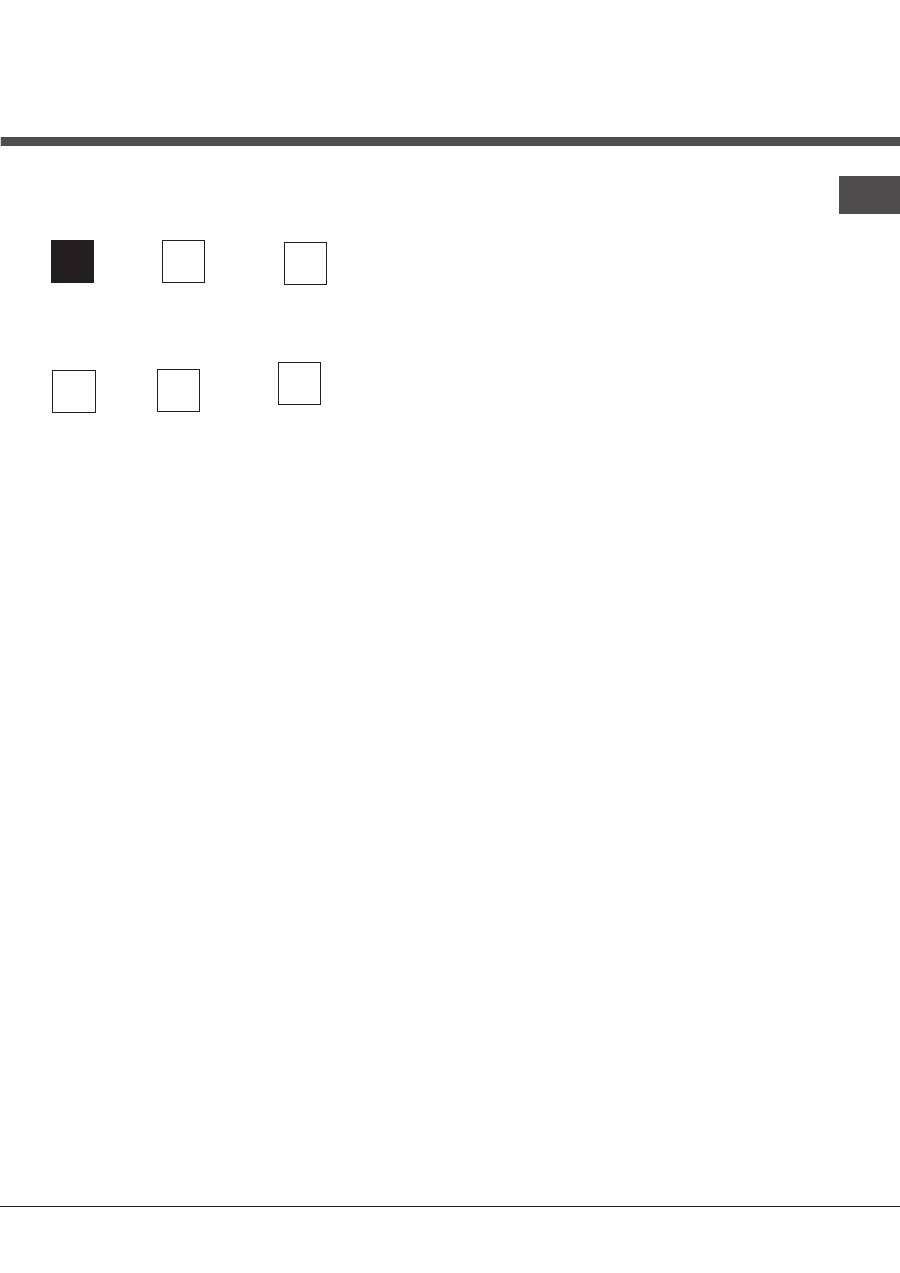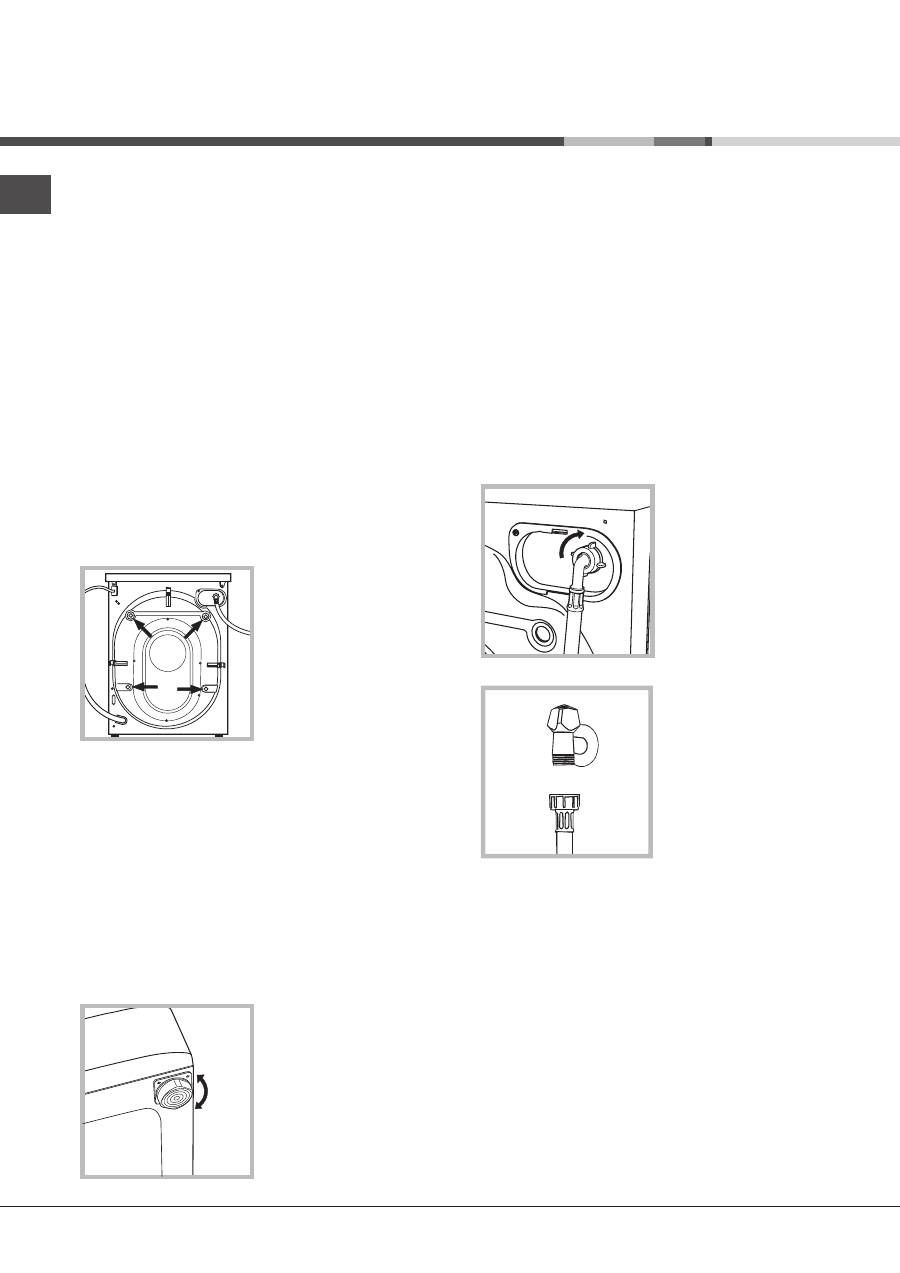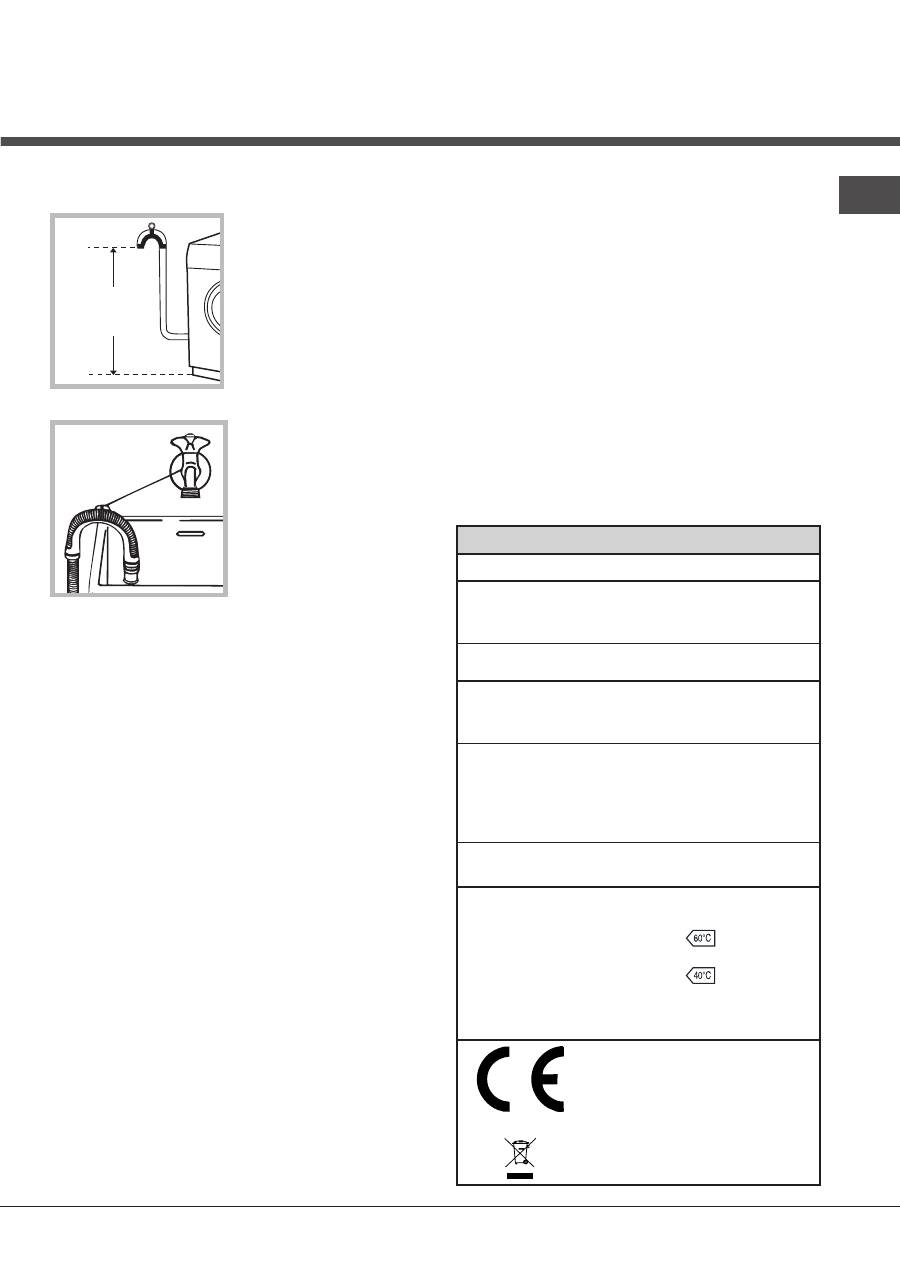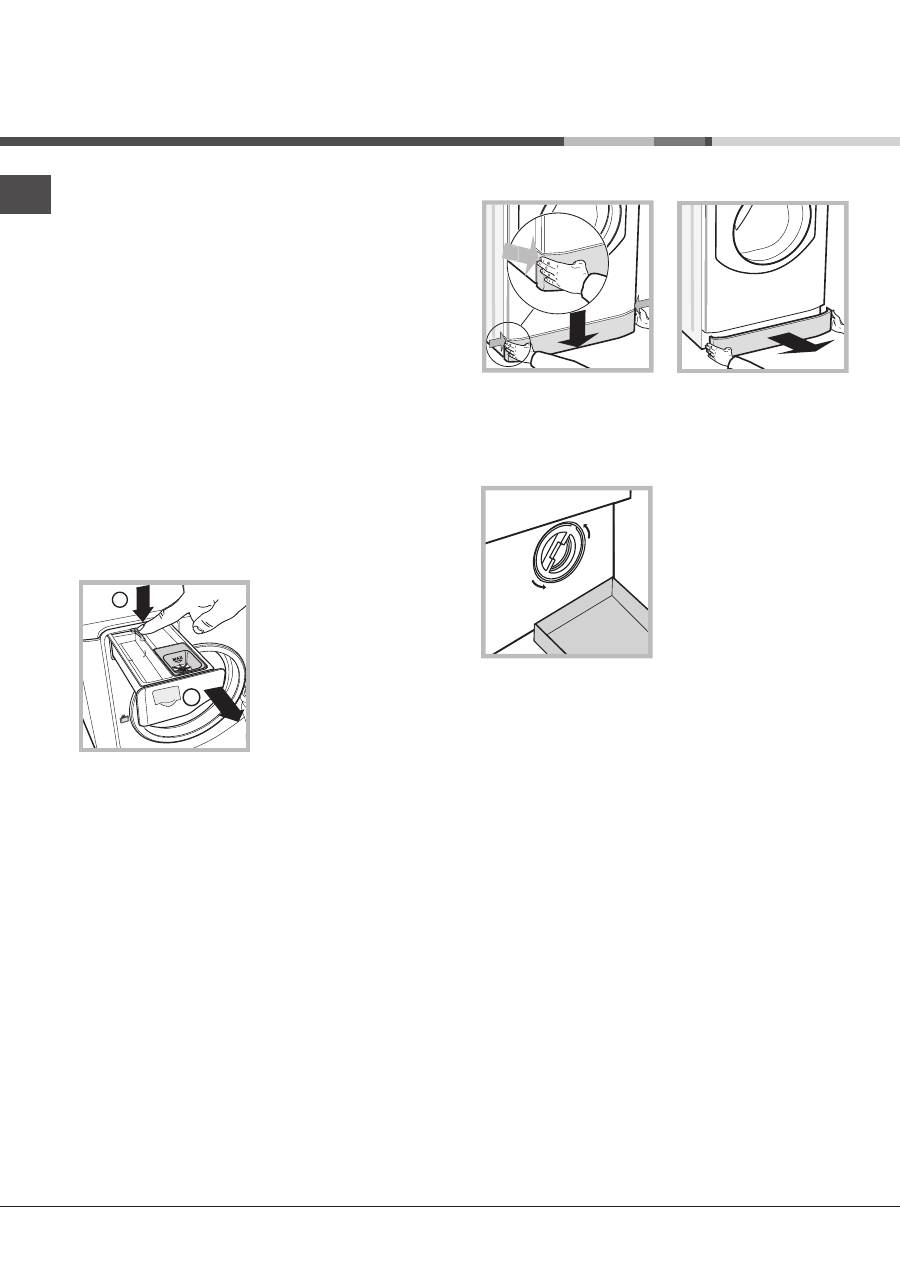Hotpoint-Ariston AQ113D 697: инструкция
Раздел: Бытовая, кухонная техника, электроника и оборудование
Тип: Стиральная Машина
Инструкция к Стиральной Машине Hotpoint-Ariston AQ113D 697

EN
1
Contents
Installation, 2-3
Unpacking and levelling
Connecting the electricity and water supplies
Technical data
Care and maintenance, 4
Cutting off the water and electricity supplies
Cleaning the machine
Cleaning the detergent dispenser drawer
Caring for your appliance drum
Cleaning the pump
Checking the water inlet hose
Precautions and advice, 5
General safety
Load balancing system
Disposal
Opening the porthole door manually
Description of the machine, 6-7
Touch control panel
Running a wash cycle, 8
Wash cycles and options, 9
Table of wash cycles
Wash options
Detergents and laundry, 10
Detergent
Preparing the laundry
Washing recommendations
Trouble shooting, 11
Assistance, 12
WASHING MACHINE
AQUALTIS
AQ113D 697
Instructions for
installation and use
English,1
EN
Türkçe,25
TR
GR
ΕΛΛΗΝΙΚΑ, 13
Polski,37
PL
CIS
Русский,49
UK
Українська,61

EN
2
Installation
!
This instruction manual should be kept in a
safe place for future reference. If the washing
machine is sold, given away or moved, please
ensure the manual is kept with the machine,
so that the new owner may benefit from the
advice contained within it.
!
Read these instructions carefully: they
contain vital information relating to the safe
installation and operation of the appliance.
!
Inside the pack containing this manual, you
will also find the guarantee and all the details
necessary for installation.
Unpacking and levelling
Unpacking
1. Once you have removed all the packaging
from the washing machine, make sure it has not
been damaged during transportation. If it has
been damaged, contact the retailer and do not
proceed any further with the installation process.
2. Remove the 4
protective screws
(used during
transportation) and
the corresponding
spacer, located on
the rear part of the
appliance (
see figure
).
3. Close off the holes using the plastic plugs
supplied in the pack.
4. Keep all the parts in a safe place; they will
be needed again if the washing machine is
moved to another location, to prevent the
inside of the appliance being damaged.
!
Packaging materials should not be used as
toys for children.
Levelling
1. Place the washing machine on a flat sturdy
floor, without resting it up against walls or
cabinets.
2. If the floor is
uneven, the front feet
of the machine may
be adjusted until it
reaches a horizontal
position (the angle of
inclination must not
exceed 2 degrees).
!
If the appliance is levelled correctly, it will
be more stable and much less likely to cause
vibrations and noise while it is operating,
particularly during the spin cycle.
!
If it is placed on carpet or a rug, adjust the
feet in such a way as to allow a sufficient
ventilation space underneath the washing
machine.
Connecting the electricity and
water supplies
Connecting the water inlet hose
!
Before connecting the inlet hose to the water
supply, run the water until it is perfectly clear.
1. Connect the inlet
hose to the machine
by screwing it onto
the cold water inlet of
the appliance, which
is situated on the top
right-hand side of
the rear part of the
appliance
(see figure)
.
2. Connect the inlet
hose by screwing it to
a cold water tap using
a 3/4 gas threaded
connection
(see
figure)
.
3. Make sure that the hose is not folded over
or bent.
!
The water pressure at the tap must fall within
the values indicated in the Technical data table
(see next page).
!
If the inlet hose is not long enough, contact a
specialised shop or an authorised technician.
!
Never use second-hand or old inlet hoses;
use the products supplied with the machine.

EN
3
Technical data
Model
AQ113D 697
Dimensions
width 59.5 cm
height 85 cm
depth 64,5 cm
Capacity
from 1 to 11 kg
Electrical
connections
please refer to the technical
data plate fixed to the ma-
chine
Water con-
nections
maximum pressure
1 MPa (10 bar)
minimum pressure
0.05 MPa (0.5 bar)
drum capacity 71 litres
Spin speed
up to 1600 rotations per
minute
Test wash
cycles in
accordan-
ce with
directives
1061/2010
and
1015/2010
programme
;
Cotton standard 60°C.
programme
;
Cotton standard 40°C.
This appliance conforms to
the following EC Directives:
- 2004/108/EC (Electroma-
gnetic Compatibility)
- 2006/95/EC (Low Voltage)
- 2002/96/EC
Connecting the drain hose
Connect the drain
hose to drain duct
piping or a wall drain
located between 65
and 100 cm above
the floor, making sure
it is not bent at all.
Alternatively, rest the
drain hose on the
side of a washbasin
or bathtub, fastening
the duct supplied to
the tap
(see figure).
The free end of the
hose should not be
underwater.
!
We advise against the use of hose extensions;
if it is absolutely necessary, the extension must
have the same diameter as the original hose
and must not exceed 150 cm in length.
Electrical connections
Before plugging the appliance into the
electricity socket, make sure that:
• the socket is earthed and complies with all
applicable laws;
• the socket is able to withstand the maximum
power load of the appliance as indicated in
the Technical data table
(see opposite);
• the power supply voltage falls within the
values indicated in the Technical data table
(see opposite);
• the socket is compatible with the plug of the
appliance. If this is not the case, have the
socket or the plug replaced.
!
The machine must not be installed outdoors,
even in covered areas. It is extremely
dangerous to leave the appliance exposed to
rain, storms and other weather conditions.
!
The mains socket must remain within easy reach
after the washing machine has been installed.
!
Do not use extension cords or multiple
sockets.
!
The cable should not be bent or compressed.
!
The power supply cable and plug must only
be replaced by authorised technicians.
Warning! The company shall not be held
responsible in the event that these regulations
are not respected.
65 - 100 cm

EN
4
Care and maintenance
Cutting off the water and
electricity supplies
• Turn off the water tap after every wash cycle.
This will limit wear on the hydraulic system in
the machine and help to prevent leaks.
• Unplug the appliance when cleaning it and
during all maintenance work.
Cleaning the machine
The outer parts and rubber components of the
appliance can be cleaned using a soft cloth
soaked in lukewarm soapy water. Do not use
solvents or abrasives.
Cleaning the detergent dispenser
drawer
To remove the drawer,
press lever (1) and pull
the drawer outwards (2)
(see figure).
Wash it under running
water; this procedure
should be repeated
frequently.
Caring for your appliance drum
• Always leave the door ajar to prevent
unpleasant odours from forming.
Cleaning the pump
The washing machine is fitted with a self-
cleaning pump which does not require any
maintenance. Sometimes, small items (such
as coins or buttons) may fall into the protective
pre-chamber at the base of the pump.
!
Make sure the wash cycle has finished and
unplug the appliance.
To access the pre-chamber:
1. take off the cover panel on the front of the
machine by first pressing it in the centre and
then pushing downwards on both sides until
you can remove it
(see figures);
2. position a container
so that it will collect the
water which flows out
(approximately 1.5 l)
(
see
figure
)
;
3. unscrew the lid by
rotating it in an anti-
clockwise direction (
see
figure
)
;
4. clean the inside thoroughly;
5. screw the lid back on;
6. reposition the panel, making sure the hooks
are securely in place before you push it onto
the appliance.
Checking the water inlet hose
Check the inlet hose at least once a year. If
there are any cracks, it should be replaced
immediately: during the wash cycles, water
pressure is very strong and a cracked hose
could easily split open.
1
2
1
2
1
2
Оглавление
- Installation
- Care and maintenance
- Precautions and tips
- Description of the machine
- Running a wash cycle
- Wash cycles and options
- Detergents and laundry
- Trouble shooting
- Assistance
- Οδηγίες για την εγκατάσταση και τη χρήση
- Εγκατάσταση
- Συντήρηση και φροντίδα
- Προφυλάξεις και συμβουλές
- Περιγραφή της μηχανής
- Πως διενεργείται ένας κύκλος πλυσίματος
- Προγράμματα και δυνατότητες
- Απορρυπαντικά και μπουγάδα
- Ανωμαλίες και λύσεις
- Υποστήριξη
- Montaj ve kullanım talimatları
- Montaj
- Bakım ve onarım
- Önlem ve öneriler
- Makinenin tanıtımı
- Bir programın çalıştırılması
- Programlar ve seçenekleri
- Deterjan ve çamaşır
- Sorun giderme
- Teknik Servis
- Instrukcja instalacji i obsługi
- Instalacja
- Utrzymanie i konserwacja
- Zalecenia i środki ostrożności
- Opis urządzenia
- Jak wykonać cykl prania
- Programy i opcje
- Środki piorące i bielizna
- Nieprawidłowości w działaniu i sposoby ich usuwania
- Serwis techniczny
- Руководство по установке и эксплуатации
- Установка
- Описание стиральной машины
- Порядок выполнения цикла стирки
- Программы и дополнительные функции
- Стиральные вещества и типы белья
- Предосторожности и рекомендации
- Техническое обслуживание и уход
- Неисправности и методы их устранения
- Сервисное обслуживание
- Інструкція з монтажу та експлуатації
- Встановлення
- Опис машини
- Як здійснювати цикл прання
- Програми й опції
- Миючі засоби і білизна
- Запобіжні заходи та поради
- Технічне обслуговування та догляд
- Несправності та засоби їх ліквідації
- Допомога

